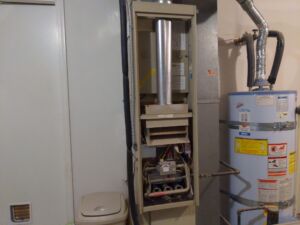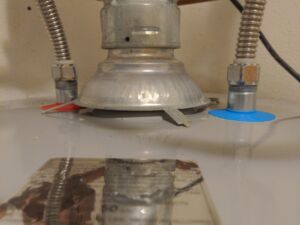
Oftentimes, in an attempt to gain more living space, areas of the home which were not intended for occupation get remodeled or adapted for such use. When this work is performed by persons lacking adequate experience, knowledge of proper building practices or void of the required building permits, dangerous conditions can inadvertently develop.
Carbon Monoxide is odorless, colorless and poisonous. Because carbon monoxide is not detectable without instrumentation, most people who are exposed don’t even know it. For this reason, it is known as the “silent killer”. When inhaled, it bonds to the red blood cells in the body and prevents oxygen from being absorbed. As a result, internal organs and cells are unable to get the oxygen they need and begin to suffer from hypoxia.
Oxygen levels in standard air, measured in ppm, would be about 400 parts per million. As CO levels increase and remain above 70 ppm, symptoms become more noticeable and can include headache, fatigue and nausea. At sustained CO concentrations above 150 to 200 ppm, disorientation, unconsciousness, and death are possible. A concentration of 400 ppm of CO is enough to produce unconsciousness or death over a short time of exposure.

An even more obscure scenario would be a natural draft appliance in a bedroom closet which could easily have the draft in the flue disrupted when the heating / cooling system or any other exhaust fan was operated. With most duct connections being outside of the home’s envelope (usually attic / crawlspace) any leakage would present a negative pressure within the home. As the HVAC equipment operates, it draws air from the returns and any leakage from the system must be replaced. Other appliances may also contribute to negative pressures within a home, such as a large range hood, downdraft range or even a clothes dryer. Any of these scenarios could be exacerbated with improper combustion in any gas fired appliance.
In most fuel burning appliances, the combustion process is not perfect, leading to a single carbon atom combining with one oxygen atom, resulting in CO. The worse the combustion process is, the greater the concentration of CO in the exhaust gasses. As long as the appliance is venting and drafting normally, toxic fumes go harmlessly up the flue and are diluted into the surrounding environment.
